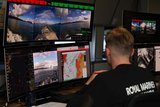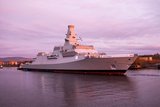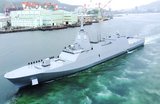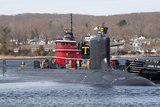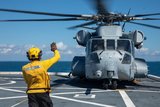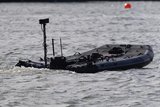How bad management could put the US Navy’s cruiser fleet far behind Chinese capabilities
Ticonderoga-class USS Philippine Sea. (Photo: US Navy)
The modernisation of its cruisers has been a headache for the US Navy. Although the service has spent billions to extend the service life of Ticonderoga-class guided-missile vessels, the process recorded delays, over costs and quality issues, which could put its fleet far behind Chinese capabilities in the coming years.
A report issued by the US Government Accountability Office (GAO) last week pointed out that the branch had invested nearly US$4 billion to upgrade seven Ticonderoga ships. Only three of them, however, will complete the improvement process and “none will gain five years of service life, as intended”, the report noted.
Already have an account? Log in
Want to keep reading this article?
More from Naval Warfare
-
![Hanwha wins Australian government approval to increase its stake in Austal]()
Hanwha wins Australian government approval to increase its stake in Austal
The contract would mean the two shipbuilders can collaborate strategically and enhance shipbuilding capabilities in Western Australia.
-
![UK to join US Navy’s Virginia-class submarine assembly effort to speed up construction]()
UK to join US Navy’s Virginia-class submarine assembly effort to speed up construction
The expansion of the Virginia-class submarine construction to UK shores could accelerate the project as US shipbuilders continue to fall short of delivery goals.
-
![US Navy seeks new sensors for the CH-53K King Stallion heavy-lift helicopter]()
US Navy seeks new sensors for the CH-53K King Stallion heavy-lift helicopter
The US Navy intends to publish a draft request for proposals in Q2 2026 and conduct an open competition for the supply of new electro-optical and infrared capabilities for the CH-53K heavy-lift helicopter.
-
![NATO naval exercises map out future USV requirements but raise questions on acquisition]()
NATO naval exercises map out future USV requirements but raise questions on acquisition
Uncrewed surface vessels have shifted from a desirable capability to a critical one for navies. But should these systems be bought outright, rented as a service or rapidly built using commercial off-the-shelf components?








